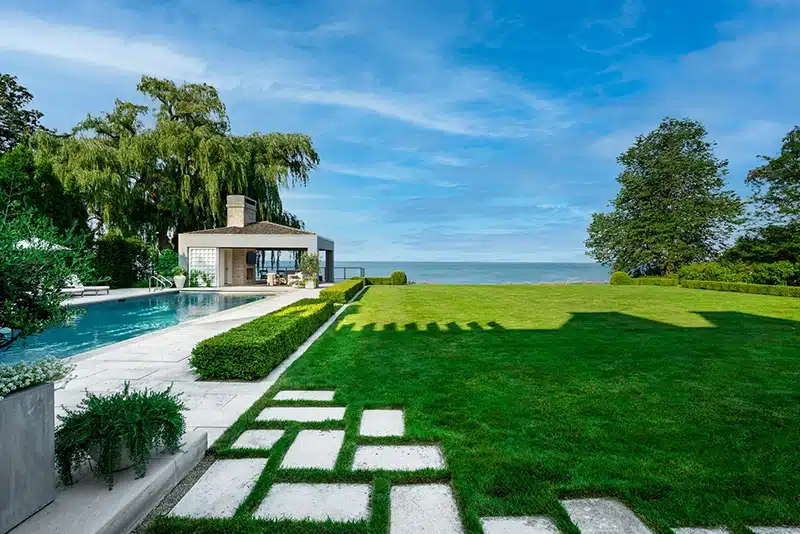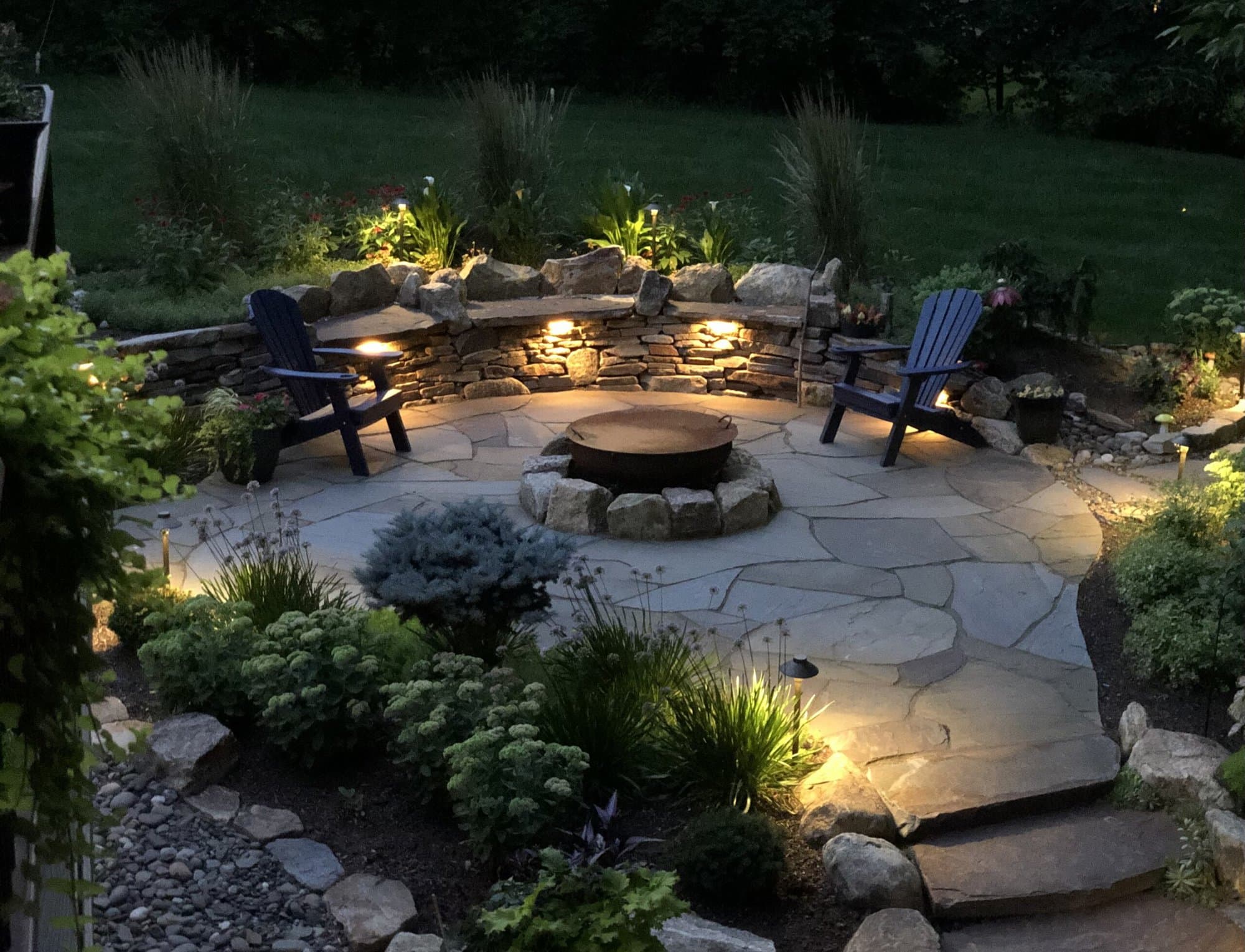The Value of Comprehending Different Sorts Of Landscaping for Your Garden
Understanding the various types of landscaping is a vital part in crafting a yard that not just shows personal taste but also meets ecological needs. Each landscape design design-- be it formal, cottage, sustainable, or city-- provides distinctive advantages that can dramatically affect the general health and wellness and looks of your outside space.
Benefits of Landscape Design Expertise
Recognizing the basics of landscaping offers countless benefits for both beginner and experienced garden enthusiasts alike. A solid grasp of landscaping concepts allows individuals to develop practical and aesthetically attractive outside rooms that line up with their personal choices and the particular characteristics of their yards.
One significant advantage is enhanced environmental wellness. Knowledge of sustainable techniques and native plants permits gardeners to grow environments that promote biodiversity while lessening the need for chemical plant foods and pesticides. Furthermore, understanding soil types and drain can bring about much healthier plant development and decreased disintegration.
Landscaping understanding additionally boosts the aesthetic worth of a property. By finding out about design aspects such as shade, texture, and scale, garden enthusiasts can create cohesive and welcoming landscapes that raise curb charm. This not only raises individual satisfaction yet can also improve residential property worth.
In addition, informed gardeners can save time and resources. Acknowledging the right plants for details problems, such as light and moisture levels, guarantees that initiatives are not thrown away on unsuitable selections. Ultimately, an extensive understanding of landscaping equips people to make educated choices, fostering a more rewarding gardening experience.
Summary of Landscaping Types
Landscaping encompasses a variety of styles and techniques, each customized to satisfy the distinct requirements and preferences of gardeners. Recognizing these varied kinds is crucial for developing an exterior area that lines up with ecological considerations and specific preferences.
One prominent type is traditional landscape design, identified by structured layouts, well-defined flowerbeds, and making use of in proportion plantings. This design usually stresses a sense of order and consistency within the yard - Las Vegas Landscaping. On the other hand, naturalistic landscape design concentrates on simulating the charm of nature, utilizing organic forms and indigenous plants to create a more loosened up and informal setting
Sustainable landscape design has actually gained grip, promoting environmentally friendly practices that preserve water and decrease chemical usage. This method often integrates xeriscaping, which uses drought-resistant plants appropriate for arid environments. Furthermore, city landscaping addresses the obstacles of limited room in city environments, commonly utilizing upright yards and roof spaces to maximize greenery.
Official Landscaping Described
Identified by its precise layout and structured elements, official landscaping produces an atmosphere of sophistication and sophistication in outside areas. This design stresses symmetry, geometric shapes, and distinct lines, often integrating polished bushes, topiaries, and organized flower beds. The overall result is a polished and sleek environment that accentuates building features and enhances the elegance of the bordering landscape.
In official landscaping, pathways are usually straight and might be lined with consistent products such as block or rock. These courses typically cause prime focus such as water fountains, statues, or ornamental trees, further enhancing the structured nature of the design. Color combinations often tend to be extra minimal, concentrating on unified mixes that advertise a calm ambience.
Water attributes in official landscapes are generally made with accuracy, usually looking like round or rectangular pools. The careful placement of plants is crucial, with species picked for their capacity to keep a neat appearance throughout the seasons. Overall, official landscape design is ideal for those who appreciate order and sophistication, supplying an ageless aesthetic that can considerably elevate the worth and charm of outdoor areas.
Home Garden Characteristics
Home gardens usually stimulate a sense of beauty and whimsy, mixing a variety of plants in an apparently slipshod yet unified plan. Characterized by their rich, informal format, these gardens commonly feature a diverse mix of flowering perennials, herbs, annuals, and veggies. This varied growing not only develops visual rate of interest but additionally attracts valuable bugs and advertises a well balanced environment.
A vital quality of home gardens is their usage of standard materials and frameworks. Stone pathways, rustic fence, and wood trellises are commonly integrated to improve the yard's quaint charm. In addition, the incorporation of seating areas, such as benches or arbors, urges leisure within this serene atmosphere.
Color plays a considerable duty in home gardens, with an emphasis on soft pastels and lively colors that stimulate a feeling of nostalgia. Flowers like foxgloves, hollyhocks, and roses are staples, often intermingled with great smelling natural herbs such as lavender and thyme.
Home yards reflect a viewpoint of accepting nature's changability, leading to a special and welcoming room. By prioritizing biodiversity and visual charm, they create a stunning setting for both garden enthusiasts and laid-back onlookers alike.
Lasting Landscaping Practices
Integrating sustainable landscaping practices is important for creating eco-friendly gardens that check my source flourish while reducing their eco-friendly effect. Las Vegas Landscaping. Lasting landscape design concentrates on the effective use resources, advertising biodiversity, and enhancing the natural surroundings
One trick method is choosing native plants, which are well-adapted to neighborhood problems and need less water, plant food, and chemicals. This not just saves resources yet likewise supports neighborhood wild animals, including pollinators. Implementing water-efficient watering systems, such as drip irrigation or rain harvesting, even more conserves water while making certain that plants obtain sufficient moisture.

Furthermore, lowering lawn locations and integrating hardscaping components can minimize upkeep and source use. These methods advertise an even more sustainable landscape that needs less inputs and gives ecological advantages. By embracing these techniques, garden enthusiasts can create areas that are not only attractive but likewise add favorably to the setting, fostering an unified balance between nature and human activity.

Final Thought
In verdict, a thorough understanding of numerous landscape design kinds is important for creating an aesthetically pleasing and environmentally sustainable yard. Each design, from official to cottage gardens and sustainable practices, offers one-of-a-kind advantages that enhance important link biodiversity and source performance. This expertise assists in notified decisions that contribute to the health of both the yard and its surrounding ecological community. Eventually, accepting diverse landscape design methods fosters an unified partnership between outdoor rooms and their settings, promoting long-term ecological equilibrium.
Recognizing the different kinds of landscaping is an important element in crafting a yard that not only shows personal taste yet likewise fulfills environmental demands. Each landscaping design-- be it formal, cottage, lasting, or metropolitan-- provides unique advantages that can substantially affect the general wellness and looks of your outdoor area. In comparison, naturalistic landscaping focuses on resembling the beauty of nature, utilizing indigenous plants and natural he said forms to create a much more loosened up and informal environment.
Furthermore, city landscaping addresses the difficulties of limited space in city atmospheres, frequently using upright yards and rooftop spaces to make the most of greenery.
In final thought, a thorough understanding of various landscaping types is important for developing a cosmetically pleasing and environmentally sustainable garden. (Las Vegas Landscaping)